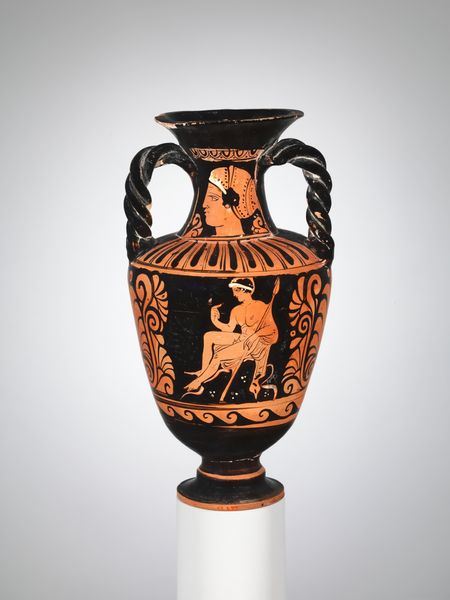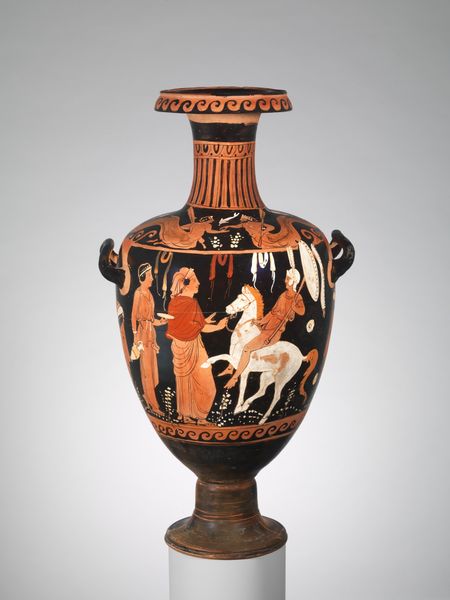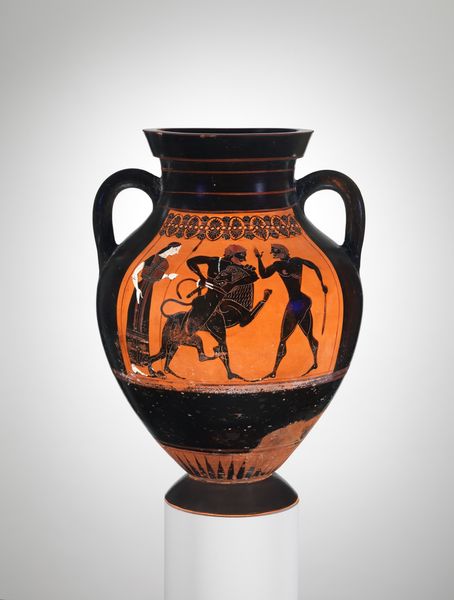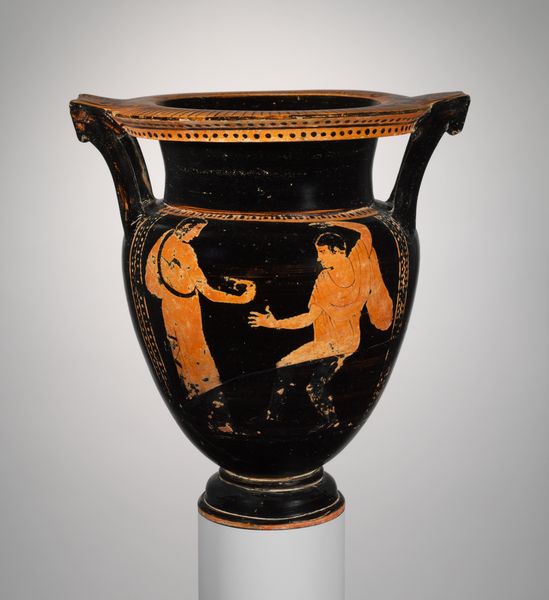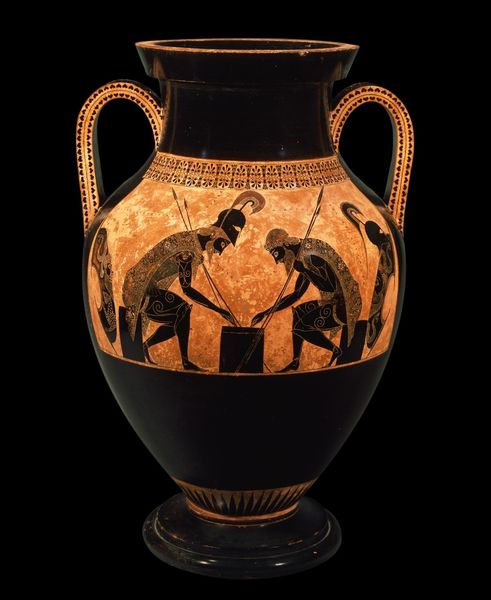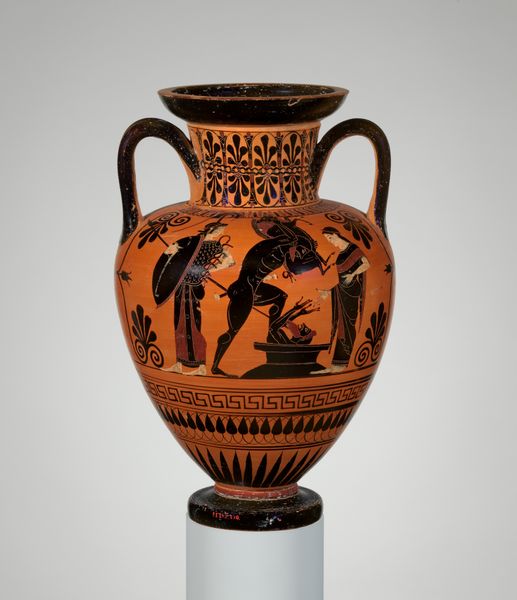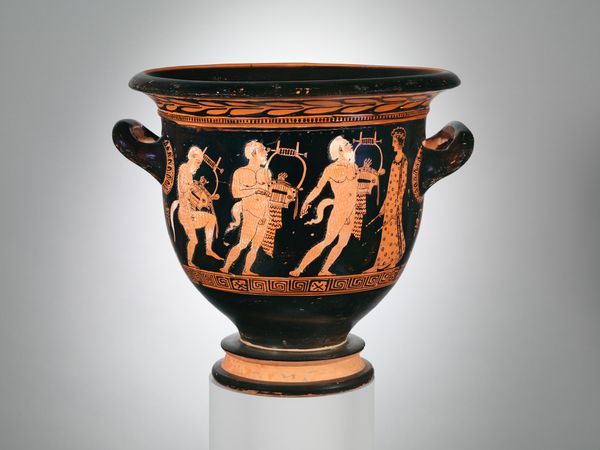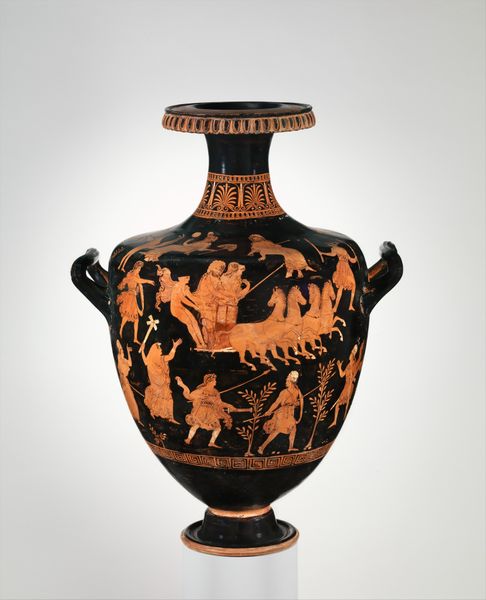
ceramic, earthenware
#
narrative-art
#
greek-and-roman-art
#
ceramic
#
figuration
#
earthenware
#
geometric
#
ancient-mediterranean
#
ceramic
#
earthenware
#
history-painting
Dimensions: H. 15 11/16 in. (39.9 cm); diameter of mouth 9 5/16 in. (23.6 cm); diameter of foot 5 3/8 in. (13.7 cm)
Copyright: Public Domain
Editor: Here we have a terracotta stamnos, or jar, from around 450 BC, made by the Group of Polygnotos. The reddish figures starkly contrast against the black background. It’s so visually arresting; it really makes you focus on the forms. What stands out to you? Curator: Immediately, I am drawn to the intricate use of line. Observe how the artist modulates line weight to delineate form and create depth, despite the predominantly two-dimensional style. Consider the narrative frieze: each figure, while relatively static, contributes to an overall sense of dynamic tension. How does the symmetry, or lack thereof, impact the visual balance? Editor: It feels off-balance to me, maybe because the figures on either side of the horseman are doing different things. One's holding a bow and arrow, the other seems to be wrestling the bull-horse? Curator: Precisely! The asymmetry invites a deeper reading of the composition. The tension between static figures and dynamic action is key. Note how the artist uses the curve of the vase itself to dictate the flow of the narrative. How does the geometric pattern at the base interact with the figural representation above? Editor: It almost grounds it, gives it a solid base from which the story unfolds. Without it, it might feel like the figures were floating. Curator: A keen observation. The geometric patterns serve not only as ornamentation, but also as a structural element, reinforcing the vessel’s form and directing the eye upwards to the narrative frieze. Editor: I see how the artist carefully balances the different elements. I used to think it was just decoration! Curator: Indeed. It is through such focused observations of form, line, and structure that we can truly appreciate the sophistication of this ancient work.
Comments
No comments
Be the first to comment and join the conversation on the ultimate creative platform.

